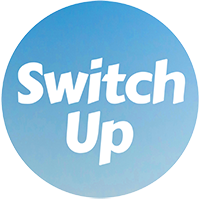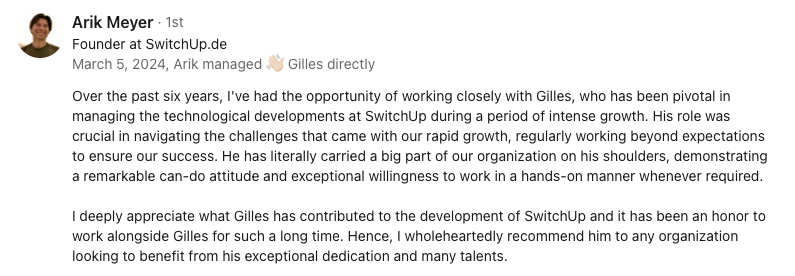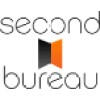Abstract:
The article explores the challenges freelance tech professionals face in maintaining the freedom and flexibility that initially drew them to independent work, highlighting how constant hustle, pressure to pursue more projects, and comparison with peers often lead to burnout and blurred boundaries between work and life. It argues that traditional success metrics—money, status, and relentless productivity—can erode well-being and that, without the safety nets of salaried employment, freelancers bear greater personal costs. The author proposes adopting a minimalist mindset focused on identifying what is truly essential—the concept of finding your “enough” number, which is the minimum sustainable income needed to cover both personal and professional expenses with a reasonable buffer for the unexpected. Through practical steps such as tracking real expenses, building in savings, and conducting quarterly reviews, freelancers can set clear financial boundaries, reduce stress, and reclaim time for rest and creativity. The article integrates a personal anecdote about relocating from Berlin to Lisbon, demonstrating how adjusting one’s baseline in response to life changes can open space for new priorities. Ultimately, it emphasizes that redefining success around personal values and sufficiency leads to greater satisfaction, sustainable work habits, and the confidence to set and communicate boundaries, allowing freelancers to shape a work life that truly supports their well-being.
You work hard to build a freelance tech career that feels free. You set your own hours, pick your projects, make your own rules. Yet freedom can slip away. Hustle pressure, the urge to accept one more project, and constant comparison on LinkedIn or Slack soon pile up. Late nights and endless context switching start to feel normal. The line between work and life fades. I remember feeling drained and questioning why I started freelancing—especially after a week of chasing deadlines and realizing I hadn’t seen daylight in days.
Always chasing more money, status, or wins looks like progress. In reality, it often ends in exhaustion and that nagging feeling of never doing enough. The tech scene cheers the grind, but without a salary or HR safety net, freelancers pay a bigger price. Health and flexibility—the very reasons I went solo—are the first to go. I’ve learned this the hard way, more than once.
There is another way to measure success. It isn’t endless hustle but clarity: knowing what is essential and letting that guide your choices. You don’t need to shrink your goals. You set your own rules, focus on what matters, and reclaim the breathing room you miss. The pages below explore how I learned to spot my enough—and how you can build a freelance life that fits without burning out.
Why always seeking more holds tech freelancers back
The hidden costs of always hustling
For many tech freelancers, the pull to take bigger projects, charge higher rates, and pile up success stories is strong. At first, it feels like freedom—you set the rules. Soon, though, the pressure to keep scaling sneaks in. Someone on Slack lands a flashier contract, a post on LinkedIn shows a huge win, and that quiet voice says you should earn more. The always-on mindset runs deep.
Burnout rarely arrives with fanfare. It creeps in through context switching, late-night debugging, and never being fully off. A Blind survey reported that almost seven in ten tech workers feel burned out, so if you drag by Friday, you have company. The cost shows up in poor sleep, short tempers, and a fading memory of why you chose this path.
Instead of enjoying flexibility, many freelancers bounce from one urgent deadline to the next and miss real rest. The plan was a life with more space, yet the days feel squeezed.
When safety depends on always having more, anxiety becomes background noise. Projects flow into evenings, weekends turn into work days, and work and life blur. The result is constant low-level stress and a feeling that your last invoice is the only thing keeping you safe.
Traditional tech culture rewards the grind, but without paid leave or HR support, the solo worker carries all the risk. Over time, this hits more than energy. It drains creativity, strains relationships, and makes you reactive. There’s always another sprint, email, or bug, but rarely time to step back.
I remember a particularly rough patch after moving from Berlin to Lisbon. I was juggling new clients, adjusting to a different cost of living, and trying to prove I could make it work anywhere. One night, staring at my laptop at 2 a.m. with cold coffee and a bug that refused to die, I realized I’d traded one hamster wheel for another. That was a wake-up call: something had to change.
So what is the alternative? Instead of hunting for more, get clear on what is enough and let that shape your business.
Minimalism for tech freelancers
Rewriting your goals with the minimalist mindset
Minimalist ideas invite you to pause and ask what really brings freedom, peace of mind, and purpose. For me, this shift wasn’t just about decluttering my apartment (though my closet thanks me). It was about giving space only to what matters—especially in my finances. Before I accept a contract now, I look at its real cost in sleep, stress, and lost family time. Writers like Vicki Robin call this shift moving from more to enough. It changed how I set priorities, not just for income but for daily work. Minimalism helped me realize that saying yes to everything was actually costing me more, not less, in the long run.
Redefining success on your own terms
Minimalism doesn’t kill ambition. It makes sure ambition builds the life you want instead of wearing you out. Picture a high-paying but frantic project. Taking it would wipe out your weekends and push aside your real priorities. With a minimalist lens, I pause, check if the job matches my core values, and decide from there. You choose your own scoreboard instead of letting trends or paychecks decide. When enough is rooted in what you value, work feels less like a race and more like a tool for living well.
Minimalism is clarity, not compromise
Choosing enough isn’t lowering the bar. It’s knowing what is worth your time and having the confidence to say no when something doesn’t fit. Research in positive psychology shows that people who practice sufficiency report higher satisfaction and less stress. I’ll admit, I once tried to save money by skipping a subscription for a key tech tool—only to spend hours hacking together a workaround that crashed during a client demo. Lesson learned: sometimes, minimalism means investing in the right essentials, not just cutting costs for the sake of it. By deciding with intention, you free space for what matters most and set up a stronger base for long-term success.
The power of finding your ‘enough’ number
Understanding your minimum sustainable income
This isn’t about scraping by or cutting every small joy. Your enough number is the monthly income that pays essentials such as housing, food, bills, and health care, plus a small buffer. For example, if essentials cost €2,000 and you want €300 for surprises, your enough number is €2,300.
Unlike plans that aim to quit work forever, the enough number focuses on the present. It covers needs now and calms the mind.
When I moved from Berlin to Lisbon, I started tracking every expense—partly out of curiosity, partly out of panic. To my surprise, I discovered I could save almost €400 a month just by switching co-working spaces and cooking at home more often. That data gave me the confidence to say no to projects that didn’t fit, knowing my baseline was covered.
Having this baseline shifts how you work. You know when you can slow down, say no to extra gigs, or prepare for lean months without panic. The clarity acts as a filter for project choices and supports your well-being.
The freedom that comes from knowing ‘enough’
People who anchor their lives in enough report higher happiness and less stress. With a clear baseline, you’re less prone to financial fear and unhealthy comparison. You can protect downtime, pick projects that excite you, and keep a sustainable pace. The result is less burnout and more room for growth.
I found that calculating my own enough number was simpler than I expected, once I focused on the essentials.
How to figure out your personal enough number
A practical approach to finding your baseline
Start with basics that keep you afloat. List housing, food, bills, tech tools, and a bit of fun. This first pass gives a real picture of your life, not generic advice, oui?
Turning real expenses into reliable data
Track actual expenses for at least three months. Look for patterns, not perfection. A spreadsheet or budget app is enough. Include professional costs.
Building in a buffer for the unexpected
Add a 10 to 20 percent cushion for slow months, taxes, or a broken laptop. This stops panic when surprises hit.
Including savings and planning for taxes
Layer in savings for emergencies or retirement. Then divide the total by one minus your tax rate to get the pre-tax enough number.
Steps:
- List real monthly essentials and professional costs
- Total them for a baseline
- Add a 10 to 20 percent buffer and savings
- Divide by (1 - tax rate) to find the before-tax minimum income
Managing income that’s never the same each month
Freelance income is rarely steady. When I managed a multicultural team in Beijing, I learned to handle unpredictable budgets and risks—skills that saved me later as a solo freelancer. Calculate your average monthly earnings from the last six to twelve months and plan using the lowest figure. Build an emergency fund covering six to twelve months. Keep business and personal accounts apart and automate transfers for taxes and savings. Review every few months to stay ready for changes.
Keep your plan flexible
Simple quarterly reviews
Every three months, pause and ask what is working, what changed, and whether your enough number still fits. If costs rise or income dips, adjust. Use a calendar reminder or an app. Consistency beats complex tools.
Adjusting for big changes
Big shifts like a move, layoff, or new project are signals to update your numbers. When I moved from Berlin to Lisbon, my costs dropped and my priorities shifted. Updating my baseline let me trade city pace for a simpler routine. Resetting boundaries quickly cuts anxiety and opens space for new ideas.
How knowing your minimum changes your mindset
Security that anchors your day to day
When you know exactly what you need each month, freelance life feels less risky. The baseline turns uncertainty into something you can manage. Research shows clear financial goals lower anxiety and free mental space for creative work. Boundaries also become easier to set because you know what you need.
Choosing and communicating your boundaries with confidence
With an enough number in hand, you can accept or decline gigs with less fear. A few simple lines help:
- I need to focus on current clients so I cannot take extra projects now.
- I appreciate the offer, but I am not available for meetings after 6 p.m.
- My main focus this month is client development, so I will not join new committees.
Internal reminders such as Saying no here protects my best work make the process easier.
Action steps for living by your enough number
Quick start guide
Spend twenty minutes to sketch a first version:
- List monthly essentials: housing, food, utilities, insurance, transport, tech, and some fun
- Add a 10 to 20 percent buffer
- Multiply by 12 for a yearly view
- Add taxes and savings
Review every three months and refine as you get better data. A recurring reminder keeps it on track.
Scripts for setting and keeping your limits
When a client asks for one more task:
I need to meet current deadlines, so I cannot take extra work right now.
For scheduling:
Thank you for understanding that I am unavailable after 5 p.m.
To stay helpful yet decline:
I value our work. Right now I cannot lead the new project, but I can support in an advisory role.
Practice these lines and they soon feel natural.
Knowing what is essential puts you back in charge of your freelance path. Clarity about your enough number means less stress, stronger boundaries, and more energy for quality work and real downtime. It’s not about shrinking ambition. It’s about goals that support the life you want. When you are clear on enough, saying no gets simpler, and each yes has purpose.














